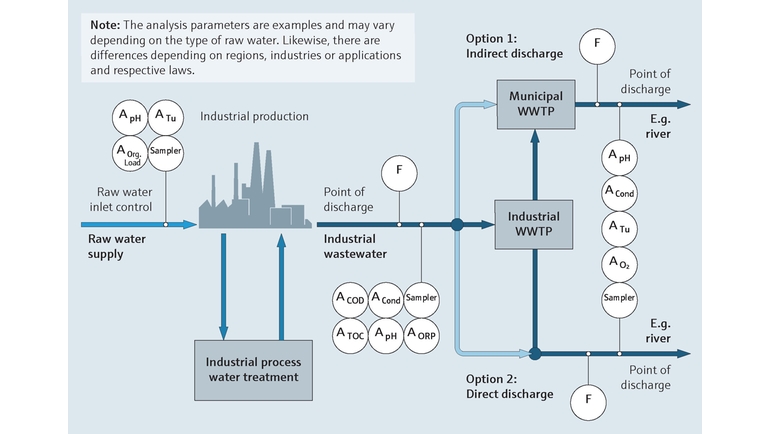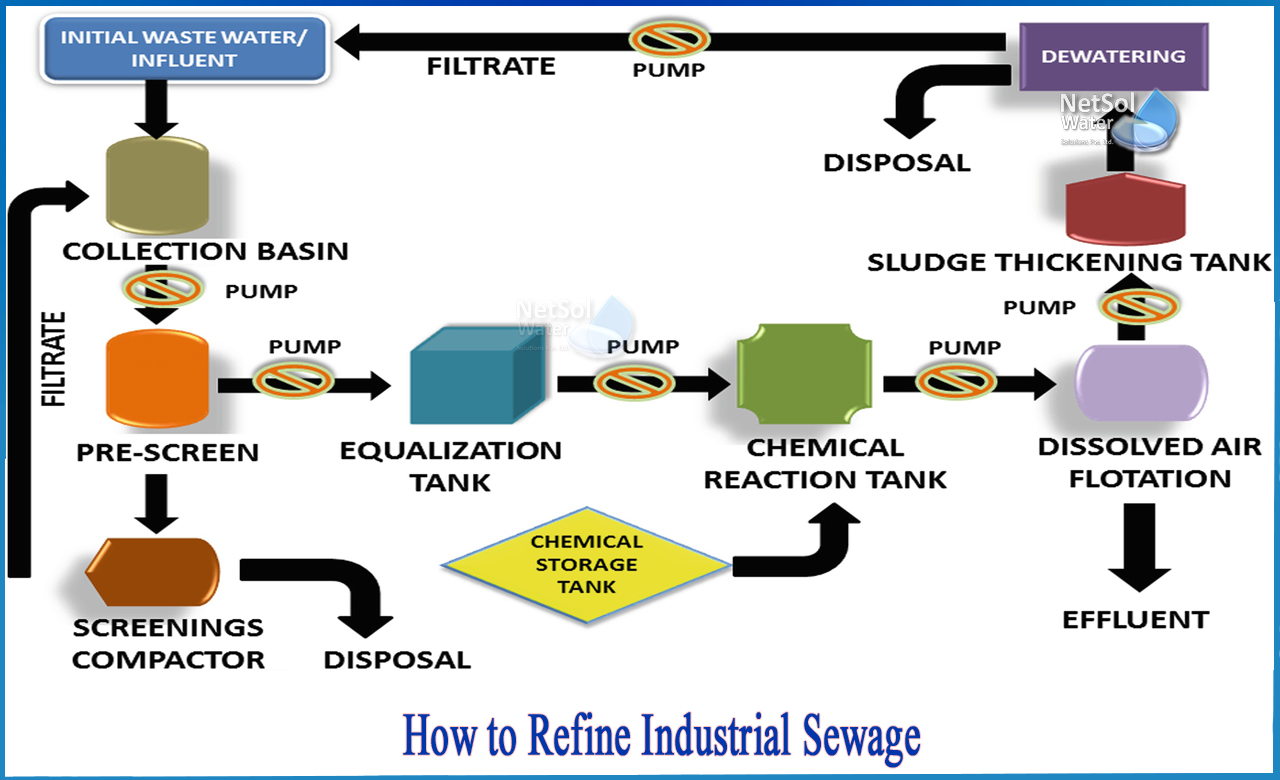Advancements and Advancements in Hazardous Waste Water Treatment Technologies
The landscape of commercial wastewater therapy is undertaking a transformative change, driven by advancements that improve both effectiveness and sustainability. As regulative requirements develop, the combination of AI and device knowing into wastewater management systems promises to make sure and enhance operations compliance.
Overview of Drainage Therapy Technologies
Wastewater treatment technologies encompass a variety of techniques developed to remove impurities from commercial effluents before their release right into the atmosphere. These technologies are essential for keeping environmental balance and making certain conformity with environmental laws. The key groups of wastewater treatment consist of physical, chemical, and biological techniques, each serving unique purposes based upon the nature of the pollutants present.

Biological treatment methods utilize bacteria to weaken raw material, making them particularly efficient for organic-rich effluents. Methods like triggered sludge and biofilm activators harness the all-natural destruction capacities of bacteria, leading to considerable reductions in biochemical oxygen demand (BODY)
Advanced Filtering Methods
Advanced filtering methods stand for an essential advancement in the world of commercial wastewater therapy, improving the performance of pollutant elimination procedures. Industrial Waste Water Treatment. These techniques incorporate a series of modern technologies, consisting of microfiltration, ultrafiltration, nanofiltration, and turn around osmosis, which supply sequential barriers for various particle dimensions and chemical frameworks
Microfiltration and ultrafiltration use membrane systems to remove suspended solids, microorganisms, and bigger organic molecules, improving the top quality of effluent previous to additional treatment. Nanofiltration connects the void between ultrafiltration and reverse osmosis, effectively getting rid of organic substances and divalent ions, therefore decreasing the load on downstream procedures.
Reverse osmosis uses the greatest level of filtration by enabling only water and tiny molecules to pass through its semi-permeable membrane layers, making it optimal for reclaiming high-quality water from commercial effluents. Recent advancements in membrane layer technology, consisting of the advancement of more fouling-resistant and resilient products, have significantly enhanced operational effectiveness and decreased prices.
Incorporating these innovative filtering strategies not only boosts the overall therapy process however additionally adds to sustainability initiatives by allowing water reuse and source recovery in commercial setups. (Industrial Waste Water Treatment)
Biological Therapy Innovations

Additionally, the development of crafted biological systems, such as membrane layer bioreactors (MBRs), integrates biological therapy with advanced membrane layer filtering. This integration permits higher effluent top quality and decreased impact, making it appropriate for space-constrained industrial facilities. Innovations in genetically crafted microorganisms have actually also arised, useful site boosting the biodegradation of certain contaminants, such as pharmaceuticals and hefty metals, that are commonly challenging to find out get rid of.
Additionally, the application of bioaugmentation strategies, where helpful microbes are presented to boost the existing biological therapy procedures, has revealed encouraging cause boosting therapy performance. These advancements jointly represent a fad towards more lasting and reliable organic therapy methodologies that can adapt to the progressing intricacies of industrial wastewater streams. As industries continue to focus on ecological conformity, these biological developments will certainly play an essential role in wastewater administration.

Source Recovery Approaches
In industrial setups, the combination of resource healing methods has actually become significantly important for enhancing sustainability and lessening waste. These methods concentrate on extracting beneficial materials and power from wastewater streams, thereby changing potential contaminants right into recyclable sources.
One popular strategy is nutrient healing, where nitrogen and phosphorus, frequently existing over in wastewater, are captured and exchanged fertilizers. This not just reduces environmental influences but additionally provides a circular economic situation solution for agricultural applications. In addition, technologies such as anaerobic digestion permit the conversion of natural waste into biogas, a sustainable power resource that can offset nonrenewable fuel source usage in commercial operations.
Additionally, progressed purification and membrane layer technologies help with the recuperation of commercial byproducts such as metals and salts. These recuperated products can be rehabilitated right into manufacturing procedures, reducing the need for virgin resources.
Future Patterns in Drainage Administration
As markets progressively focus on sustainability, the future of wastewater administration is readied to undertake substantial transformations. Technological advancements, such as expert system and device discovering, will certainly allow a lot more effective tracking and administration of wastewater systems. These innovations can anticipate maintenance needs, optimize treatment procedures, and boost decision-making, inevitably minimizing functional expenses and environmental impact.
Moreover, the integration of round economic situation concepts will certainly play a crucial duty in wastewater monitoring. Industries are anticipated to move towards systems that not just deal with wastewater however also recover beneficial sources, such as nutrients, water, and energy. This transition will certainly lessen waste and promote the reuse of products, straightening with worldwide sustainability goals.
Arising treatment techniques, such as membrane layer bioreactors and advanced oxidation procedures, will certainly even more enhance the performance of wastewater treatment, permitting better effluents ideal for reuse. In addition, regulative frameworks are most likely to develop, stressing more stringent standards for wastewater discharge useful reference and motivating industries to take on ingenious therapy services.
Conclusion
To conclude, the evolution of commercial wastewater treatment modern technologies demonstrates a substantial shift in the direction of enhanced performance and sustainability. Developments in innovative filtration strategies, biological therapies, and source healing approaches highlight the industry's dedication to ecological stewardship. The integration of fabricated intelligence and artificial intelligence additionally maximizes these processes, making sure regulatory compliance and advertising a round economy. Continued innovations in these areas will play a vital role fit the future of wastewater administration and shielding vital water resources.
The landscape of industrial wastewater treatment is going through a transformative change, driven by advancements that boost both performance and sustainability.Wastewater therapy modern technologies incorporate an array of approaches created to get rid of impurities from commercial effluents prior to their launch into the atmosphere.Utilizing the power of biological processes has led to significant innovations in the therapy of commercial wastewater.In addition, the application of bioaugmentation methods, where helpful microorganisms are introduced to enhance the existing biological therapy procedures, has shown encouraging outcomes in enhancing treatment performance. These innovations jointly symbolize a pattern towards even more efficient and lasting biological treatment techniques that can adjust to the developing complexities of commercial wastewater streams.